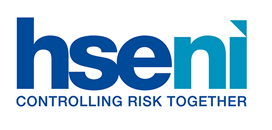Introduction
LLDs are a major cause of sickness absence. Management of the risks can reduce the number of people experiencing sickness absence as well as reducing the period of each absence.
The most common risk factors at work associated with LLDs are:
- repetitive kneeling and/or squatting
- fixed postures such as standing for more than two hours without a break
- frequent jumping from a height
Diseases of the lower limb
Scientific evidence suggests that there are several recognised diseases of the lower limb which can be work related such as:
- hip and knee osteoarthritis
- knee bursitis
- meniscal lesions/tears
- stress fracture/reaction injury
- varicose veins of the lower legs
Osteoarthritis (OA)
Osteoarthritis (OA) is a degenerative condition that affects the joints of the body (for example knees, hips and spine), and happens when the cartilage coating at these joints becomes damaged or worn away. Hip OA is more common among male than female workers and farmers have a significantly higher risk of suffering from it. There is a significantly increased risk of knee OA among miners, floor layers and cleaners.
Knee bursitis
Knee bursitis - also called coal miner's, carpet layer's or housemaid's knee - is caused by repetitive kneeling or knee-straining activities. Workers who develop bursitis generally report tenderness and swelling, and a reduction in knee movement due to pain and tightening of the skin over the kneecap.
Meniscal lesions/tear damage
If the knee is bent or twisted while bearing a load, the force may cause meniscal lesions or damage to occur. Overuse trauma, for example repetitive squatting or kneeling, can cause meniscal injury or damage. Such damage leans toward the injured knee being inclined to degenerative changes typical of OA.
Stress fracture/stress reaction injuries
Stress fracture and reaction injuries are the result of repeated micro-injuries to bone, typically found in those who regularly undertake marching or stamping of the feet. They are more common in people undergoing military training and in athletes, particularly long-distance runners.
Varicose veins
Varicose veins are any dilated subcutaneous veins of the leg. Employees may complain of feelings of heaviness and pain, a sensation of swelling of the legs. These complaints can increase during the day, especially after prolonged standing.
Preventing lower limb disorders
Because most injuries happen as a result of overuse, the most effective way to reduce risk is to design work to avoid overuse. This can be done by, for example:
- providing mechanical aids
- using staff rotation to lessen the time spent carrying out 'risky' tasks
- using regular breaks
- providing seating, where possible
Personal protective equipment in the form of knee pads provide useful protection while kneeling on hard floor surfaces, but they do not mitigate the risks of extreme flexion of the knee. Their benefit is largely in respect of preventing lacerations and penetrating injuries, and improving comfort. It is not known whether they reduce the risk of osteoarthritis (OA).
There is some evidence that anti-fatigue matting may be effective in reducing the risks from prolonged standing. However, the use of mats in the workplace requires careful consideration because of the increased risk from slips and trips.
